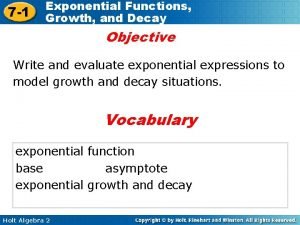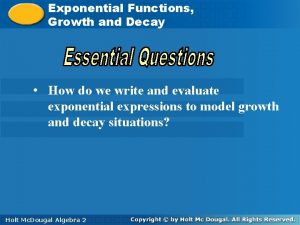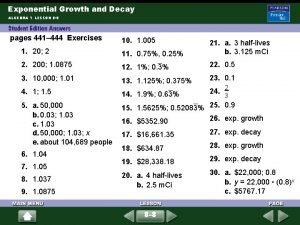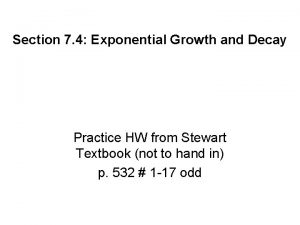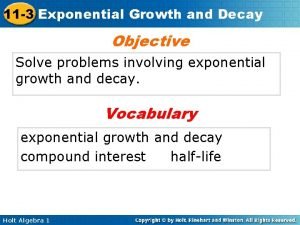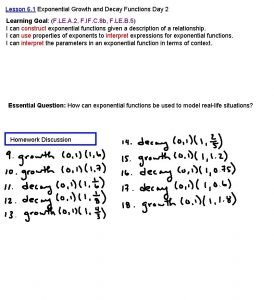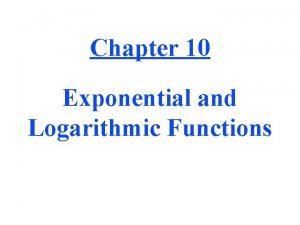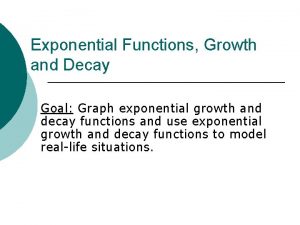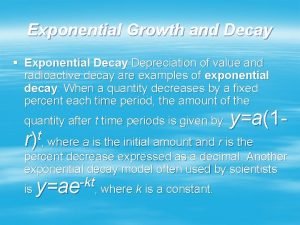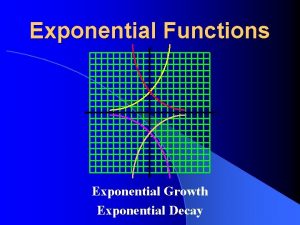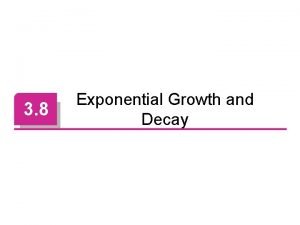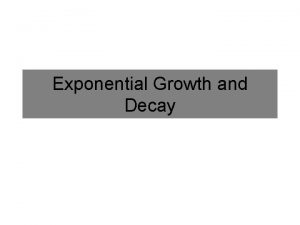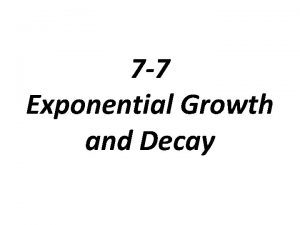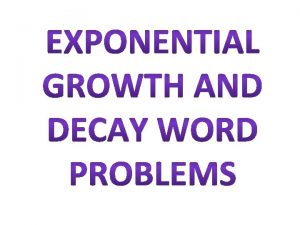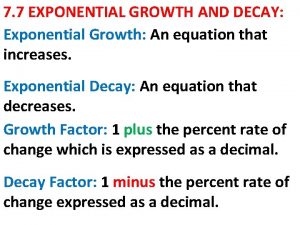8 1 Exponential Growth 8 2 Exponential Decay









- Slides: 9

8. 1 Exponential Growth 8. 2 Exponential Decay

Exponential Function An exponential function has a positive base other than 1. The general exponential function is

The graph of y = x b Graph. Exponent ial function. tii Asymptote – a line that a graph approaches as you move away from the origin. ( The graph never touches the line. ) If b is greater than 1 the graph is an exponential growth. b>1 If b is greater than 0 but less than 1 the graph is an exponential decay. 0<b<1 ( A reflection in the y direction. )

The graph of y = x-h ab +k Graph. Exponential function. tii If a is negative the graph will reflect in the x direction. The absolute value of a changes the y- intercept. The h shifts the graph horizontally. (left or right) The k shifts the graph vertically. (up or down)

Exponential Growth Model Instead of x, t is the variable. (1+r) is called the growth factor. a is the initial amount. y is the amount after t years.

Exponential Growth Compound Interest A is the balance. P is the principal deposited in an account. r is the interest rate changed to a decimal (% 100). n is the number of times the interest is compounded in a year. Annually n=1 Semiannually n=2 Quarterly n=4 Monthly n = 12

Compound Interest Problem You deposit $500 in an account that pays 3% interest. Find the balance after 2 years if the interest is compounded quarterly. A=? P = $500

Exponential Decay Model y is the quantity after t years. t is the variable. a is the initial amount. (1 -r) is the decay factor.

Exponential Decay Depreciation You buy a new car for $22, 000. The value of the car decreases by 12. 5%. What is the value of the car after 4 years. y=? a = $22, 000
 How to tell if a function is decay or growth
How to tell if a function is decay or growth Growth or decay exponential
Growth or decay exponential Exponential growth and decay algebra 1
Exponential growth and decay algebra 1 Growth and decay poe
Growth and decay poe Exponential growth and decay formula
Exponential growth and decay formula Growth and decay formula
Growth and decay formula Exponential growth vs decay
Exponential growth vs decay Exponential function form
Exponential function form 4-1 exponential functions growth and decay
4-1 exponential functions growth and decay Growth or decay exponential
Growth or decay exponential
